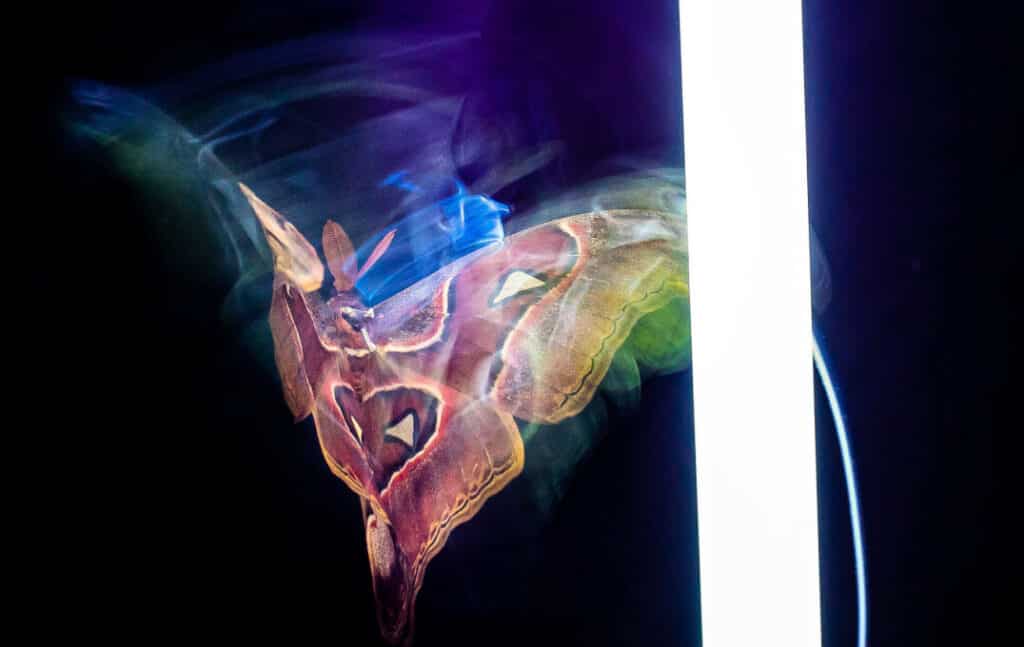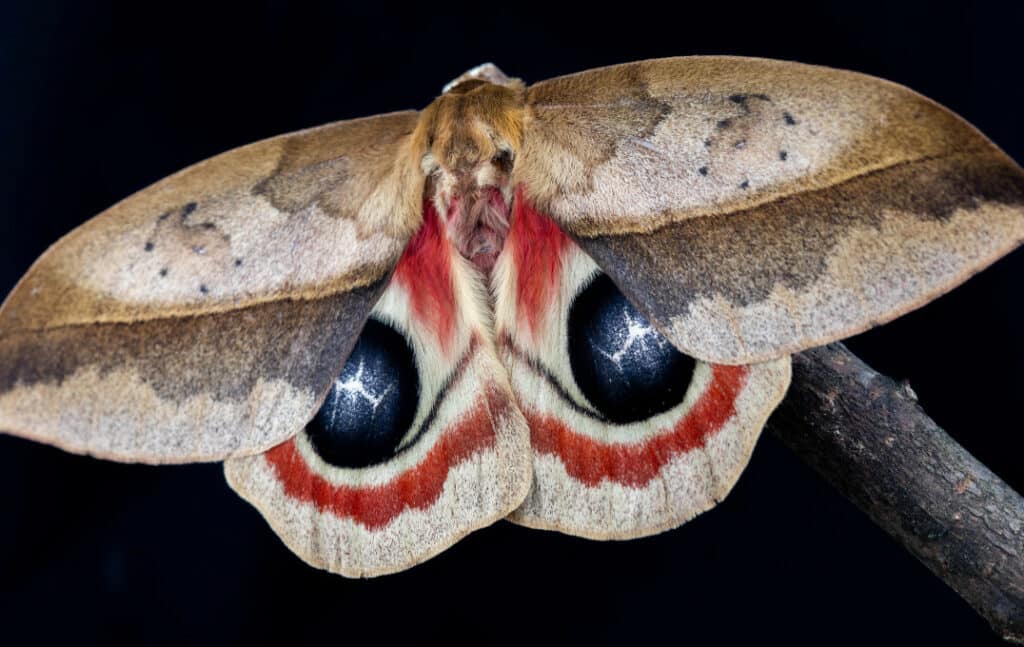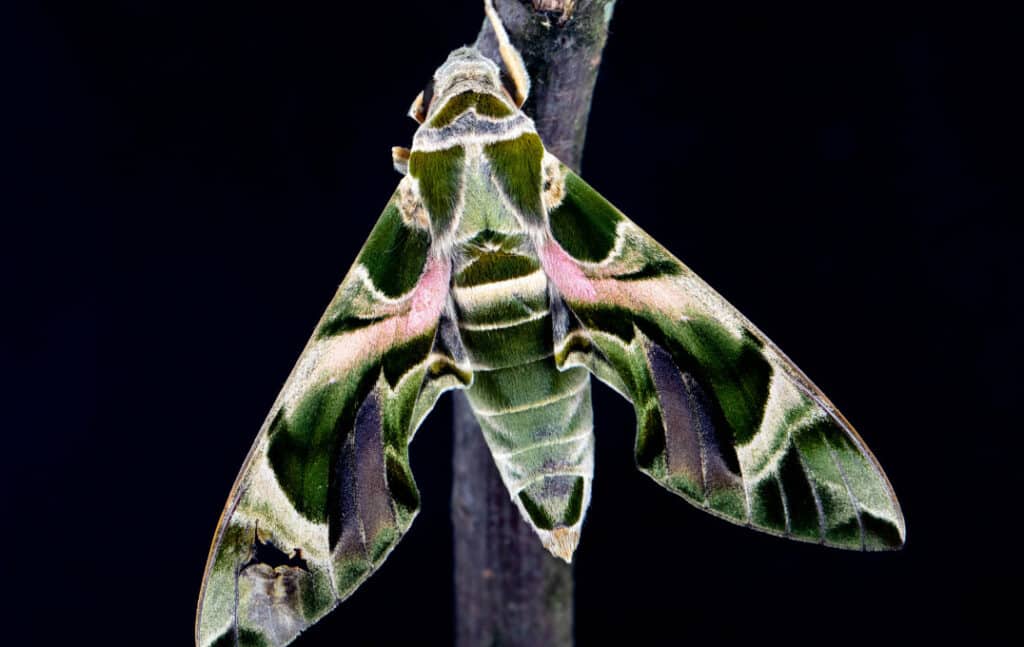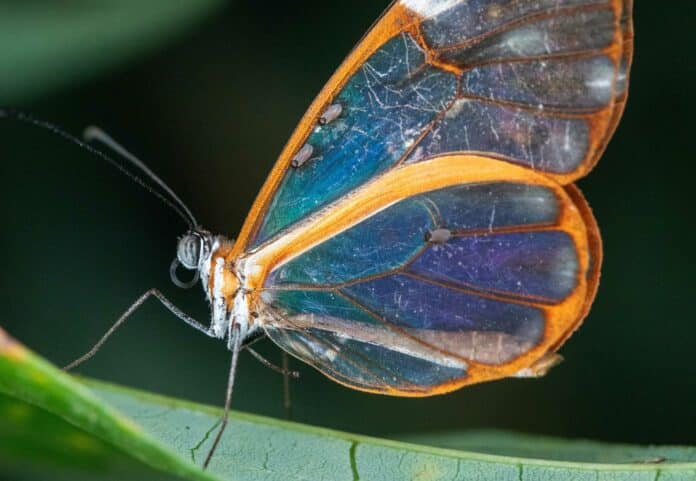The reasons behind the erratic flight of nocturnal insects around fires and lamps have been explained through theories such as “lunar navigation” and “escape to the light.” However, due to the lack of three-dimensional flight data to rigorously test these theories, the cause for this peculiar behavior has yet to be solved.
A new study by Imperial College London researchers used high-resolution motion capture in the laboratory and stereo-videography in the field to reconstruct the 3D kinematics of insect flights around artificial lights. They captured slow-motion videos and analyzed them to get new insights into why nocturnal insects gather around light.
Researchers found that flying insects are not attracted to light but become disorientated by it as they think it is the sky, and therefore the way ‘up’ – which causes them to crash.

The study’s lead author, Dr Samuel Fabian, from the Department of Bioengineering at Imperial, said: “We wanted to understand why insects seem unable to resist flying into and around potentially fatal light sources. Answering this question could help us get a better grip on humans’ impact on insects and the wider natural world.”
In field experiments in Costa Rica, researchers conducted video analysis and found that contrary to existing theories, insects are not attracted to light from a distance; instead, they become trapped when flying close to an artificial light source.
The study revealed that insects turn their dorsal side (top) toward light sources. While this helps them maintain proper flight control under natural lighting, when approaching artificial light, it causes them to steer around the light source, resulting in continuous entrapment.

Additionally, the researchers observed three peculiar behaviors: orbiting (stable circular flight around the light), stalling (a steep climb gradually reducing in speed until no movement is observed), and inversion (the insect flipping upside down and crashing). Insects often righted themselves below the light, only to repeat the process by climbing above it and inverting again, consistently directing their dorsal axis toward the light source, even if it led to a crash.
Researchers in Imperial College London laboratories attached position markers to five insect species—common darter and migrant hawker dragonflies, yellow underwing and Lorquin’s atlas moths, and Oleander hawkmoths. Motion capture cameras tracked their behavior around different light sources, including a UV LED bulb, a UV-Blue Actinic tube, and a cool white LED bulb.
The study revealed that the light sources significantly impacted the insects’ ability to control their bearings, especially as they attempted to tilt their backs toward the lights.
By employing computer modeling, the researchers analyzed the behavior of insects. They determined that tilting their bodies toward the light was enough to explain the seemingly erratic flight patterns observed near lights. According to the researchers, this model is the most plausible explanation for why flying insects gather at artificial lights.

Dr. Fabian said: “Flying animals need a reliable way to determine their orientation, especially relative to the direction of gravity.
“With help from new technologies that enable us to track the movements of tiny insects in difficult and dark conditions, we were able to understand how these insects behave around different light sources.”
There has been a significant rise in artificial nighttime light, including streetlamps, residential and commercial buildings, and vehicle lights. The researchers emphasize that minimizing unnecessary, unshielded, upward-facing lights and ground reflections can help mitigate our impact on flying insects at night, especially when artificial light sources overpower natural light from the sky.
Dr Fabian added: “I hope this research motivates us to think twice about the light we throw around at night. Light at night is pollution, and we must consider it as such. It may be that simply shrouding and restricting our lights can dramatically improve life for our nocturnal wildlife.
“A key next step for this research is to work out how distance changes the effect of lights at night. We know what’s happening at 1 meter from a light, but what’s happening at 100 meters?”
Journal Reference:
- Fabian, S.T., Sondhi, Y., Allen, P.E. et al. Why flying insects gather at artificial light. Nat Commun 15, 689 (2024). DOI: 10.1038/s41467-024-44785-3
